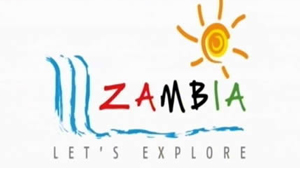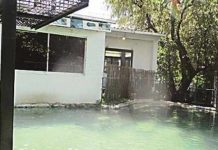THE perpetual sound of gushing water snaking through black solid rock formations and later falling off over 10 metres deep into a pool before flowing away, is enough to engulf onlookers with an aura of wonderment.
The little-known Chipoma Waterfalls in Chinsali district in Muchinga Province arguably has most of what it takes to claim its rightful position as one of Zambia’s tourism sites to attract local and foreign attention.
Chipoma Waterfalls is situated on the Chimanabwe River, about 24 kilometres south-west of Chinsali and is evidently an attractive portion of the river which is surrounded by ever lush green grass and woods.
It was proclaimed as a national monument in 1964 and is under the auspices of the National Heritage Conservation Commission (NHCC).
The flora and picturesque surroundings at the waterfalls capped by its rich history dating back to the Stone Age era suitably complement and qualify the area as an alternative and unique sightseeing package to the seventh natural wonder of the world – the Victoria Falls in Livingstone.
The area is believed to have been occupied by the Stone Age people owing to the 12 surviving old clay iron smelting kilns dotted around it.
The waterfalls comprise multiple cascades across Chimanabwe River whose source is Konja stream situated 17 kilometres in the newly created Shiwan’gandu district.
Konja is a tributary of Lubu and Chambeshi rivers in Chinsali and Mpika respectively.
These are the waters that collectively rush through the rocky cascades and rapids of Chimanabwe River, producing a loud but soothing sound culminating into an impressive water curtain.
The name Chipoma is derived from the sound produced as the water traverses through the rocky surfaces before disappearing downstream in the cover of the ever green foliage.
The area around Chipoma Falls is rich in a variety of botanical species which are sustained by the wetlands on which they grow.
NHCC Chipoma waterfalls caretaker Sejor Mulenga explained that the waterfalls area is also host to a range of indigenous vegetal kinds which are also believed to be medicinal.
Mr Mulenga said the wetland also hosts the protea plant species which is a favourite and ‘sumptuous’ diet for some wild animals such as monkeys.
It is for this reason that the area is also a habitat for herbivorous wild animals.
“African polony locally known as chikanda is also found here, it grows not too far from here…over one kilometre downstream. Out of the 129 hectares of land under management in the area, most of it is branchystergiu woodland,” he pointed out.
Mr Mulenga added that most trees in the woodland are deciduous, meaning they shed their leaves seasonally.
The scenic expanse is well complemented by the sound of water and birds whose habitat is the surrounding vegetation.
Mr Mulenga explained that the waterway forming the serene Chipoma Falls consists of three types of waterfalls.
“We have three types of waterfalls from the first view point within the range of 500 metres downstream. We have cascades, like that one which drops from one to 1.5 metres and it is called a cascade waterfalls.
“Then we have rapid waterfalls where water goes faster and produces faster sound, while downstream is where we have curtain waterfalls. The name Chipoma comes from the collective sound produced by the series of waterfalls,” he explained.
The wetland area is also home to aloe vera, a plant species renowned for its effective medicinal properties.
You can be forgiven for calling this area an orchard as it is home to carcide hullensis and stricknose species locally known as insongwa and utusongole respectively.
Others are upaka kickiana (masuku), bohiymi fruits (mfungo) and hardwood timber species such as ptelocupus angollensis.
Mr Mulenga said the area is also conducive and can be a source of rich botanical and archaeological studies owing to the Stone Age iron smelting kilns used by adults of that particular era.
“It was not allowed for young men and boys to participate in the foundry [casting molten metal]. It was left only for the old people to do the job,” he pointed out.
The charming natural beauty and rich historical tales of Chipoma Waterfalls are however void of infrastructure to complement and bolster tourism in the area.
According to Mr Mulenga, the tourist attraction is a fair crowd-puller for mostly local tourists from Chinsali who come for leisurely picnics and drink-ups during weekends.
He said the national heritage site attracts over 150 local tourists per month especially in the dry season whereas the numbers of foreign tourists are minimal.
“The number of visitors drop to 80 in the rainy season because we have torrential rains…it can rain the whole day and the falls and wetlands are usually covered with water,” Mr Mulenga said.
The waterfalls and its surroundings which require extensive and aggressive marketing are incontestably a refreshing phenomenon to body, mind and soul after a spell of ‘back-breaking’ work.
Zambia Daily Mail

 JOIN DRIVERN TAXI AS PARTNER DRIVER TODAY!
JOIN DRIVERN TAXI AS PARTNER DRIVER TODAY!











